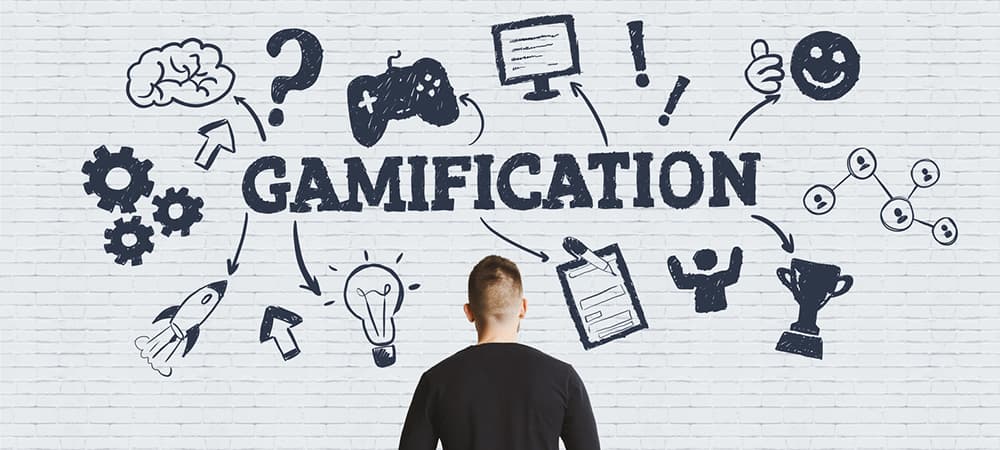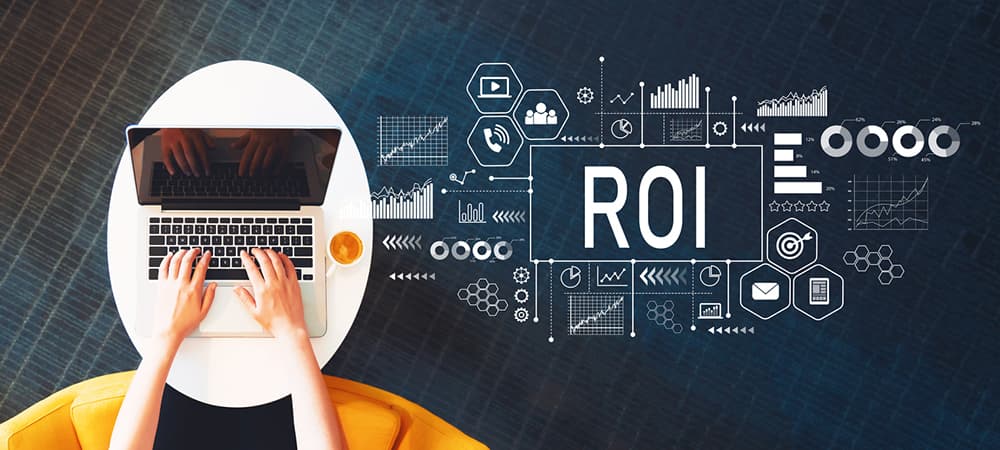We use cookies to offer you a better experience. For more information on how we use cookies you can read our Cookie and Privacy Policy.
How to Use Gamification Marketing in Your Next Promotion
January 25, 2021

No matter how old we get, we all love to play. Maybe that's why gamification marketing is reaching into every facet of marketing these days, with agencies setting up shop specifically to address this need.
Global gamification is expected to grow from $6.8 billion in 2018 to $40 billion by 2024. Plus, a U.K. marketing agency reported that while 58% of shoppers claim they’re not influenced by traditional online display ads, 60% of these same consumers admitted they’re more likely to buy from a company using gamification.
What does this mean for you? Gamification may not be an end-all, be-all approach, but a growing number of consumers welcome it into everything they do, even activities that haven't been traditionally associated with scoring points or beating boss levels. Here's why gamification is worth investigating, along with some of the best uses.
What is gamification marketing?
The term "gamification" refers to applying strategies or traits typically associated with games to actions outside of the gaming realm. And when combined with marketing, this approach is a way to grow consumer loyalty. It includes a wide variety of campaigns ranging from the famed McDonald's Monopoly promotion to Starbucks’ Rewards program.
What are the benefits of gamification in marketing?
Why join the sea of corporations using gamification to grab shoppers' attention? Simple answer: it works. There are many benefits to adding gaming or competition elements to a simple promotion, including:
- Increased interest in promotions
- Better engagement rates
- Building up anticipation for a product or event launch
- Acting as a lead magnet for new users or subscribers
Unlike other marketing tactics, which typically lose efficacy through repeated exposure, gamification marketing is shown to do better over time. The aforementioned U.K. agency reported significant figures for this. While 60% of people said they were likely to buy from a company they could "play" with, that number jumped to 86% for those who previously participated in gamification marketing.
In other words; consumers who are familiar with gamification marketing seem to enjoy it – and want to do more of it.
Best examples of gamification in email marketing
Gamification is everywhere, and it's not always apparent what the user should do once they’re finished participating. That's why it’s crucial to tie your campaign to an obvious and simple call to action, so the user feels rewarded for the time they engage with your brand's email.
There are rewards for those who do it well, with a potential 30% increase in open rates for emails using gamification. Here are five examples of companies using gamification marketing to boost their open rates, click-throughs, and purchases.
1. Scratch off discounts
People love to save. There is no shortage of coupon and deal sites, but personally receiving a coupon with the chance for significant savings is something else entirely. One way to take advantage of this trend is to send out an email with a catchy subject line offering the chance to win a certain percentage off the next purchase.
Upon clicking the scratch-off coupon, the consumer may be redirected to a website with the technology to show them a "scratchable surface" they can actively remove or click to reveal their discount. While you would provide more of the lower-valued coupons to avoid going overboard, simply offering the chance to genuinely save at a higher rate is a serious incentive for many shoppers.
2. Scavenger hunts
Cooking magazines regularly use "look and find" games, where readers can search the pages for a picture of a small rolling pin or spatula in a chance to win a prize. Today, some online retailers take a similar approach by hiding small icons within their websites. When a customer finds the picture, they can click on it to see a pop-up coupon or an entry form for a prize.
In addition to building loyalty by providing the customer with a reward, this approach gives them an opportunity to see more of your products during their quest. This type of campaign’s reach only improves with an added email component that highlights the promotion.
3. Personality quizzes
Ever seen one of those "which celebrity are you?" quizzes on social media? Well, did you know they can also work well in a promotional email? Pair a personality quiz with something you sell, a tactic being utilized by brands selling coffee, chocolate, honey, and other goods. This helps the undecided shopper find items they may feel a stronger attachment to, and it may build some buzz around your brand.
4. Instant win sweepstakes
Online sweepstakes and instant win promotions are nothing new, with groups of enthusiasts meeting online and even paying for subscriptions to access the most winnable prizes. Even if you only capture the interest of those interested in profiting, you can often get their email and contact info in the process.
Plus, many sweepstakes winners go on to become loyal shoppers. Instant win emails give readers the rush of finding out if they won right away, which encourages daily email opens with the possibility of winning.
5. Competition among peers
We use points for everything these days, so why not use them to see how we compare with our friends? Fitness trackers and mobile gaming apps already show us how we rank against our peers when accessed through social media platforms. You can capitalize on this with email by encouraging activities for points, then displaying a leader board for the best in each category.
Whether you ask shoppers to review items, share sales with friends, or participate in social activities to earn their points, letting the world know about your most enthusiastic fans can help spur even more engagement.
Tips for ensuring the best ROI

While you may have to outsource the actual design or development to an agency that specializes in gamification emails, it’s good to have a handle on what works – and what doesn't.
Get your message across effectively by considering these strategies:
1. Don't overuse gamification
Stagger the timing so that it feels special. Whether you engage in promotions that align with holidays, sporting events, or the customer's birthday, make it clear they don’t want to miss out on your limited campaign.
2. Make the prizes good enough to act upon
People will catch on if your coupon codes are similar to your typical offerings. Make it truly special by offering free shipping on an especially small purchase, for example, or provide a free gift with an order above a certain threshold. While you don’t want to give too much away, this is an enticing option for a discount you don't do more than once or twice a year.
3. Keep the design clean and avoid technical hiccups
Remember that you’re sending this in an email. Even if you host the actual "play" element on a website or app, keep the clutter to a minimum and make the call to action the star of the show. Scratch offs or spin-to-wins should perform well on both desktop or mobile devices. And don't require users to download additional software or accept new permissions to play.
4. Don't ask too much of your customer
The general rule for gamification marketing is that the reward should meet the ask. If you require a scavenger hunt on your website that may require hunting through dozens of pages, the prize should be significant. Likewise, if you're sending out a code that everyone can earn with just one step, it doesn't have to be very big. Balance your prizes appropriately.
5. Build exclusivity with your campaigns
Don't give out an offer that's widely available to everyone. If you typically give coupons to your affiliates and promotional partners to share, differentiate these offers so that they can trigger a response from even those who rarely participate. For even more exclusivity, consider using unique coupon codes generated through email signups, so deal sites can't steal your thunder.
Summary
Gamification in content marketing will continue to grow in popularity, especially as younger consumers age. The next generations have experienced gamification in just about everything, from online language courses to practicing driver's ed on mobile apps. As they grow up, it only makes sense for them to seek out the satisfaction that comes from "levelling up" with other tasks, like paying bills and shopping.
But the younger shoppers aren't the only ones to cater to, and don’t make assumptions about who will respond well to this strategy.
Women tend to be more responsive to marketing gamification than men in similar age categories, showing that we really can't tie the popularity of video games or video game culture to marketing campaigns with similar themes, since video gaming tends to be male-dominated. When the future is fun and games, companies should invite everyone in their target audience, regardless of gender or age, to enjoy these entertaining engagement principles.
About the Author: Linsey Knerl is a contributing writer for HP Tech@Work. Linsey is a Midwest-based author, public speaker, and member of the ASJA. She has a passion for helping consumers and small business owners do more with their resources via the latest tech solutions.
Article reposted with permission from HP Tech Takes






